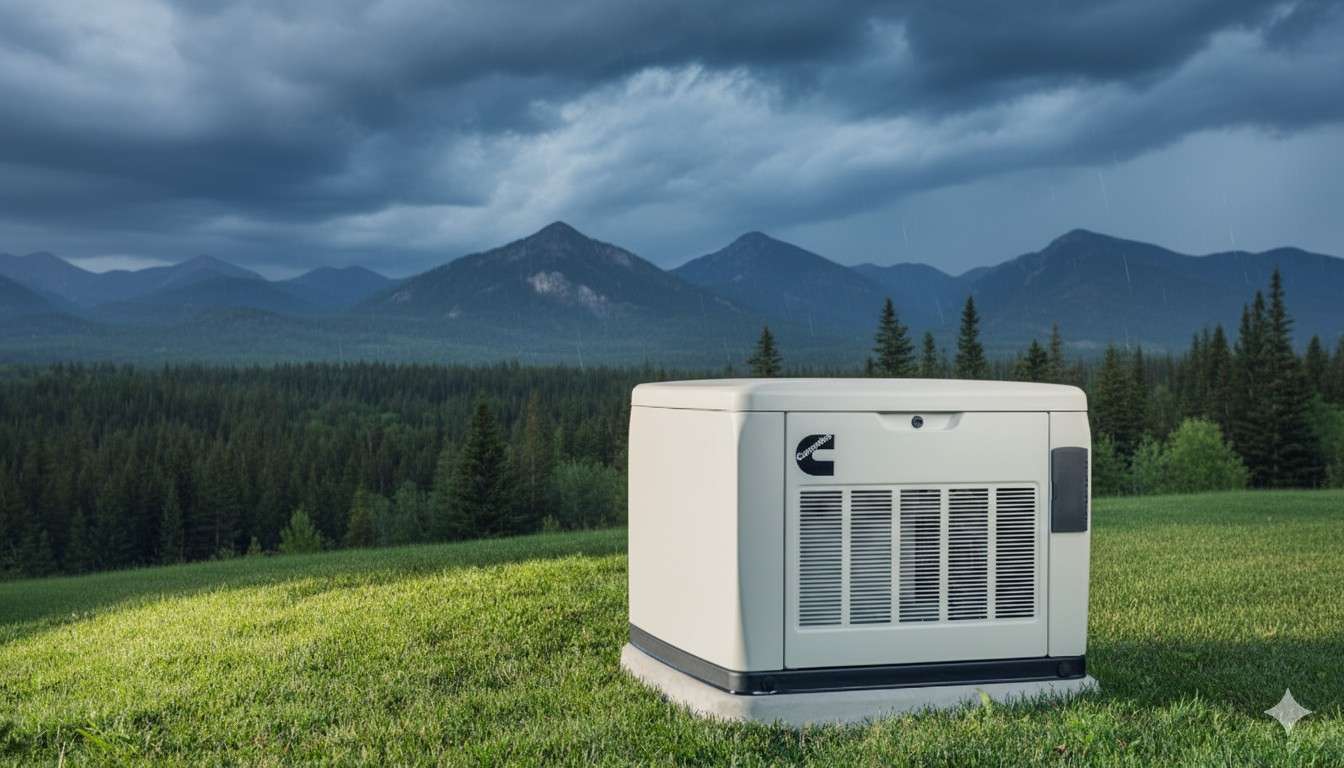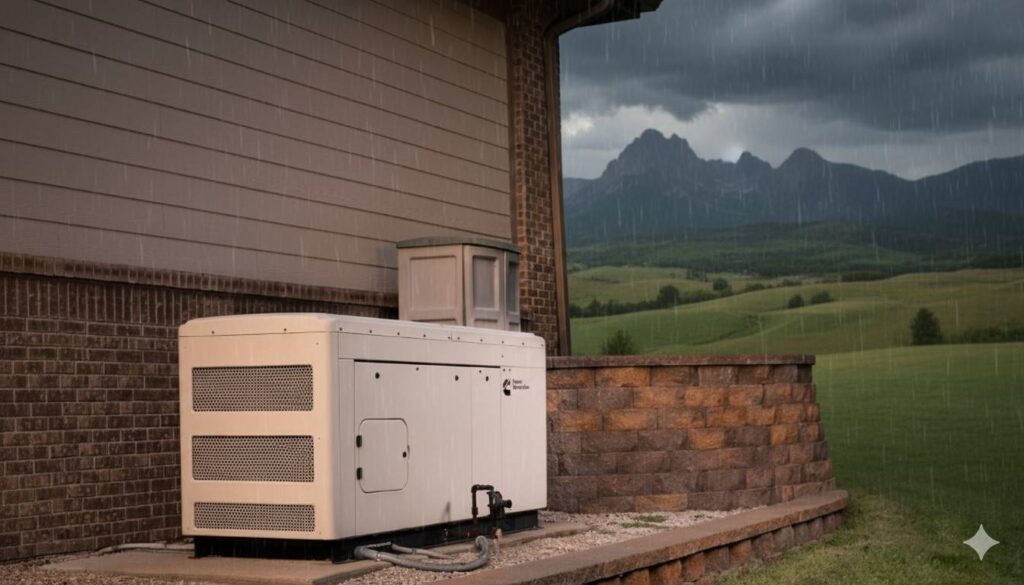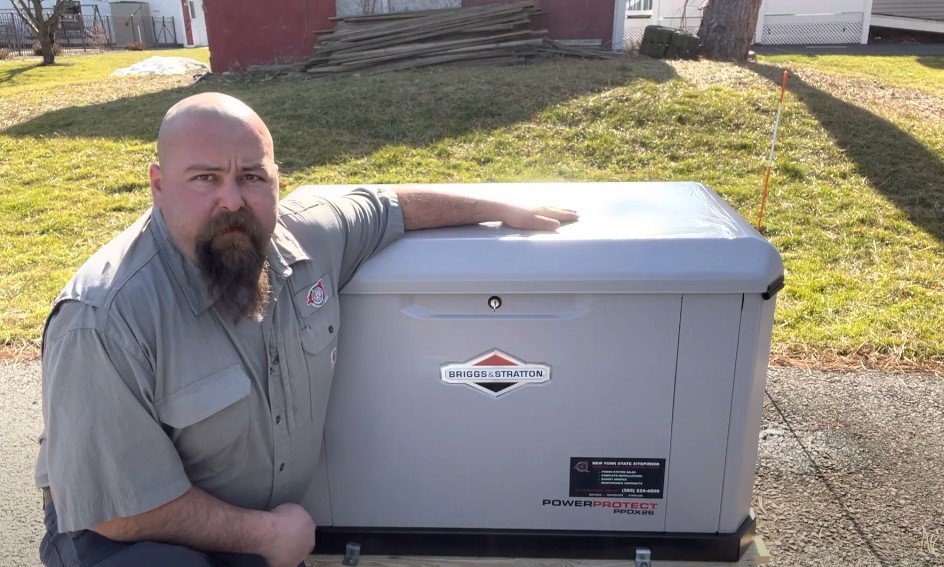Physical Address
304 North Cardinal St.
Dorchester Center, MA 02124
Physical Address
304 North Cardinal St.
Dorchester Center, MA 02124

When owning a backup generator, you want it to work smoothly during outages.
However, Cummins Standby Generator Problems can arise over time, causing stress and inconvenience.
Knowing the common issues and their fixes can save you from unexpected breakdowns.
This guide will help you easily understand and tackle these problems for a reliable power supply when you need it most.
A Cummins standby generator can face problems like not starting, frequent shutdowns, fuel issues, or low power output.
These issues usually stem from poor maintenance, dead batteries, clogged filters, or fuel contamination.
Regular checks and timely servicing can keep your generator running smoothly and ready for emergencies.

Cause:
The most common culprit is a weak or dead battery. Generator batteries can lose their charge over time, especially if the unit hasn’t run in a while.
Other causes include corroded or loose battery terminals, which prevent the electrical current from flowing properly, or a faulty battery charger that isn’t keeping the battery topped up as it should.
Fixes:
First, check the battery terminals for corrosion (a white, powdery substance).
If you see any, disconnect the battery (negative cable first) and clean the terminals with a wire brush and a baking soda/water solution.
Reconnect them securely. If that doesn’t work, use a multimeter to check the battery’s voltage.
A healthy 12-volt battery should read around 12.6 volts or higher. If it’s low, you may need to recharge or replace it.
Read Also: 10 Briggs & Stratton Standby Generator Problems (With Easy Fixes)

Cause:
This is usually a safety feature kicking in. Common triggers include low oil levels, engine overheating, or an overloaded circuit.
The generator’s internal sensors detect a potentially damaging condition and shut the engine down to protect it.
Overheating can be caused by a blocked air intake/exhaust or a malfunctioning cooling system.
Fixes:
First, check the oil level using the dipstick and top it off if it’s low. Next, ensure nothing is blocking the generator’s air vents, like snow, leaves, or debris.
If the generator is overloaded, you’ll need to reduce the number of appliances it’s powering.
Disconnect non-essential items and try restarting the generator. If it continues to overheat, the cooling system may need professional service.
Cause:
Fuel leaks are often caused by old, cracked, or deteriorated fuel lines.
The rubber and plastic components can become brittle over time due to exposure to the elements and fuel itself.
Leaks can also originate from a faulty fuel filter, a loose connection, or a problem with the fuel pump or carburetor.
Fixes:
Immediately shut off the fuel supply to the generator. Carefully inspect all fuel lines and connections for visible cracks or wet spots.
If a line is cracked, it must be replaced. Tighten any loose fittings, but be careful not to overtighten them, as this can also cause damage.
If the leak is coming from the fuel filter or pump, these parts will likely need to be replaced.
Due to the fire risk, it’s often best to call a professional for fuel-related repairs.
Cause:
A rough-running engine is often a sign of a fuel delivery problem.
This could be due to a clogged fuel filter that’s restricting flow, old or contaminated fuel that doesn’t combust properly, or a blocked fuel injector.
Spark plugs that are dirty or worn out can also lead to incomplete combustion and a rough engine.
Fixes:
Start by replacing the fuel filter, as this is a common and inexpensive fix.
If the fuel in the tank is more than a year old, it should be drained and replaced with fresh, high-quality fuel.
Using a fuel stabilizer can help prevent this issue in the future.
Also, inspect and clean or replace the spark plugs according to the maintenance schedule in your owner’s manual.
Cause:
This frustrating issue usually points to an electrical problem. The most common cause is a tripped circuit breaker on the generator itself.
It can also be caused by a faulty automatic transfer switch (ATS), which is the device that switches your home’s power source from the grid to the generator.
In some cases, the generator’s alternator or voltage regulator may have failed.
Fixes:
First, check the main circuit breaker on the generator and reset it if it has tripped.
If the breaker trips again immediately, you may have an overload or a short circuit that needs investigation.
Next, inspect the automatic transfer switch for any visible issues or fault codes.
If both seem fine, the problem likely lies with an internal component like the alternator, and you will need to contact a certified technician for diagnosis and repair.
Cause:
Black smoke typically indicates that the engine is burning too much fuel (running rich).
This is often caused by a clogged air filter, which restricts airflow and throws off the fuel-to-air mixture.
White smoke (or bluish-white smoke) suggests the engine is burning oil, which can be due to worn piston rings, a faulty valve seal, or simply overfilling the crankcase with oil.
Fixes:
For black smoke, the first and easiest step is to replace the air filter. This is a simple maintenance task that you can do yourself.
For white smoke, first check the oil level to ensure it hasn’t been overfilled.
If the level is correct and the issue persists, it points to an internal engine problem that requires professional service to repair the worn components.
Cause:
The issue could be electrical or mechanical. A common cause is a blown fuse or tripped breaker within the ATS unit itself.
The switch could also have faulty wiring, a bad control board, or mechanical parts that are stuck or broken.
Sometimes, the problem is simply that the switch has been manually set to the “off” or “utility” position.
Fixes:
First, check the ATS panel for any tripped breakers or blown fuses and reset or replace them as needed.
Make sure the switch is set to the “auto” position. If these simple checks don’t resolve the issue, the problem is likely internal to the switch.
Due to the high voltages involved, working inside an ATS is dangerous, and you should always call a qualified electrician or generator technician.
Cause:
These alerts are the generator’s way of telling you something is wrong. Each code corresponds to a specific issue detected by the generator’s sensors.
Common alarms include low oil pressure, high engine temperature, low coolant level, overcrank (meaning it tried to start but failed), or a battery charger failure.
Fixes:
Consult your generator’s owner’s manual to look up the specific alarm code. The manual will tell you what the code means and recommend troubleshooting steps.
For example, a “low oil pressure” alarm would prompt you to check the oil level.
A “high temperature” alarm would lead you to check the coolant level and look for obstructions to airflow. Always address alarms promptly to prevent further damage.
Cause:
Coolant leaks are often caused by cracked or worn hoses.
The rubber hoses that carry coolant can degrade over time and develop cracks, especially at connection points.
Leaks can also come from a faulty radiator, a bad water pump, or a loose hose clamp. Allowing the coolant level to drop can lead to engine overheating.
Fixes:
Carefully inspect all the coolant hoses and their connections for signs of leaks or damage. If a hose is cracked or feels mushy, it needs to be replaced.
Try tightening the hose clamps, as they can sometimes work themselves loose.
If the leak is coming from the radiator or water pump, these are more complex repairs that are best left to a professional.
Cause:
Mice, squirrels, and other pests are drawn to the warmth and shelter of the generator’s housing.
They can chew through wires, build nests that block air vents, and cause significant damage to the electrical and mechanical systems.
Chewed wires can cause short circuits and prevent the generator from starting or running correctly.
Fixes:
Regularly inspect the inside of your generator’s enclosure for any signs of pest activity, such as nests, droppings, or chewed materials.
Clean out any debris you find.
To prevent them from returning, you can place rodent deterrents like mothballs or peppermint oil-soaked cotton balls inside the enclosure (away from moving parts).
Sealing any small entry points in the housing can also help keep them out.
The most common reason is a weak or dead battery. Batteries lose charge over time, and if the generator’s charger isn’t working correctly, the battery won’t have enough power to crank the engine.
It is recommended to have your Cummins generator professionally serviced at least once a year. This annual service should include an oil change, filter replacements, and a thorough inspection of all systems.
No, you should avoid using old fuel. Diesel and gasoline degrade over time, which can clog fuel filters and injectors and cause the engine to run poorly or not at all. It’s best to use fresh fuel and a stabilizer.
This is typically a safety shutdown. The most common causes are low oil level or the engine beginning to overheat. Check your oil and ensure the air vents are clear of obstructions.
A small puff of black or white smoke on startup can be normal, especially in cold weather, as the engine adjusts. However, continuous or heavy smoke indicates a problem that needs to be investigated.